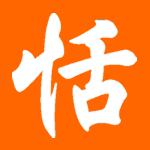http://news.bbc.co.uk/2/hi/europe/3227666.stm
Alan says: "The Japanese in the background is obviously reversed. Perhaps the BBC published a mirror-image reversed copy of the photo. Although obviously intended to be Japanese, the text in the background is not exactly legible anyway and it does not seem to make any sense. Maybe the Japanese is reversed on the background image. Who knows? I’m not sure why such a journalist would want to be photographed in front of such a gibberish background. Is this fashionable in Russia or something?"
My guess would be it had something to do with paragraph 3 of the article:
"In one chapter, its author describes a flirty sushi lunch with Vladimir Putin, then head of the Russian security services, the FSB."
Sushi, #42 on list of things White people like.


Maybe they interviewed her in the Russian sushi restaurant. That would explain the weird backdrop.
ReplyDeleteTian's theory about this picture having something to do with the "flirty sushi lunch" seems plausible. After reversing the picture, I managed to make out 雑煮 [zouni], which is a kind of Japanese soup with mochi. So it could be something at a restaurant.
ReplyDelete-Alan
Putting aside for a second the question of why there's Japanese in the background (though the restaurant idea is a good one), the reversal is easy to explain. Having done some layout myself, I know that publishers often reverse photographs embedded into articles to adhere to the golden rule that the person in the photograph should face into the text.
ReplyDeleteThis is of course, however, avoided when there is information in the photo that would reveal the switch, like a mole on one side of the subject's face, or some text on their shirt. Apparently Japanese text doesn't count as text because the majority of readers won't be able to tell that it's reversed.